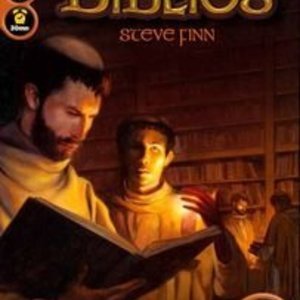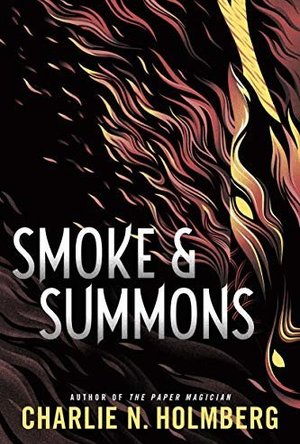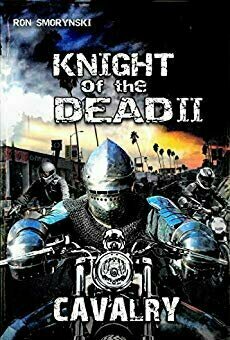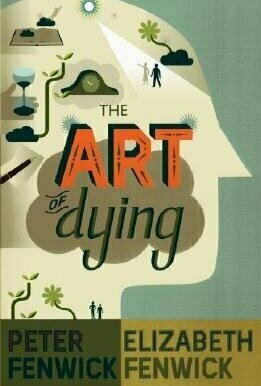
The Art of Dying
Peter Fenwick and Elizabeth Fenwick
Book
The Art of Dying is a contemporary version of the medieval Ars Moriendi--a manual on how to achieve...
Death paranormal
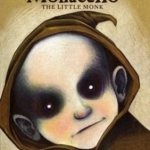
Monacello: The Little Monk: Book 1
Geraldine McCaughrean and Jana Diemberger
Book
A haunting legend from the Undercity of Naples "Goblin" "Gremlin!" "Demon!" Strange little creature....
Ross (3284 KP) rated Smoke and Summons in Books
Mar 18, 2019 (Updated Mar 18, 2019)
We have the young girl with magical powers who is held prisoner (though she has been trained to appreciate her captor's benevolence) by someone wanting to benefit from her powers. She meets a ne'er-do-well thief looking for that one last score before he can move and settle down. They travel together trying to find somewhere safe for her to go but are tracked down at all stops, until finally the male protagonist is persuaded to hand her in and reap the rewards, before the inevitable emotional rescue.
Rather than magical healing hair, however, Sandis has the ability to act as a vessel to demons, and is linked to a specific one (a fire horse). Her captor, Kazen, uses her abilities to bolster his gangster crew and lead the city's underworld. Upon sensing Kazen's desire to summon a more powerful demon (which is likely to kill her) she escapes and becomes embroiled with Rone, a young thief.
Together they try to track down a family member Sandis has become aware of, who may be able to help save her.
The story flows quite well, with enough strength in the main characters to engage the reader. Their travails, and Kazen's crew's neverending chase, are enjoyable and thrilling.
The narrative is good, swapping between Sandis' and Rone's perspectives and telling of their increasing tiredness and running out of options. At times, the author's American tone slips in (words like "Mom", "they were a ways from their lodgings" etc), which would normally be fine, I'm not that big of a snob, but it really comes at odds with the majority of the narrative and does stand out.
The setting is more early industrial revolution than more medieval, so there is the use of firearms to spice up the action.
A few times, events become a little hard to accept - quite how quickly and persistently Kazen's goons catch up with them, and how easily Rone manages to accomplish his rescue seem quite hard to believe.
Overall, the story is good and while the format of "lets go here, oh they've somehow found us again" becomes a little tiring, the book is short enough for this not to be too much of an issue.
BookwormMama14 (18 KP) rated Chivalrous (Valiant Hearts, #2) in Books
Jan 2, 2019
"Gwen felt no fear, only the surge of battle coursing through her. Steeling her. Strengthening her."
Gwendolyn Barnes longs to be be a chivalrous knight like her brothers. But her ruthless father has plans to marry her to a man who is able to break her free spirit. She is expected to become a meek and submissive wife to whomever her father chooses. Even in the Arthurian-inspired land of North Britannia Gwen is expected to concede to her parents decisions. But when Sir Allen comes to Edendale, Gwen finds herself longing for a family of her own, if Sir Allen were the one she was wed to. When tragedy befalls the land they must make their choices. Ones which could separate them forever. Will the love Gwen has found be lost forever? Will she be forced to marry a brute of a man? Will Sir Allen, the hope of the land, be able to save them all from destruction?
"She would cling tight to her shield of faith. God would be her defense."
Chivalrous is a riveting story of faith, hope and love. As I was reading I was constantly reminded of the Disney movie Brave (which is one of my favorites). Dina Sleiman's Valiant Hearts series is incredible! I love imagining what it would have been like to live in medieval England. However, it is hard for me to fathom being born into a culture that does not allow a person to choose their own future. To be bound by rules and regulations that dictate your every waking moment. It makes me grateful to be born in the time I was. There is a lot of emotions experienced in this book. But through it all the message is clear. Never give up! Keep fighting for what is right and true. And God will be with us every step of the way, guiding us into our destiny.
I received a free digital copy of Chivalrous from Bethany House Publishing through NetGalley in exchange for my honest review.
EmersonRose (320 KP) rated Knight of The Dead II: Cavalry in Books
Nov 20, 2019
I really appreciated the small moments throughout the book that hold sweet moments of family. In a dark world, it is nice to see those moments of trying to keep a little innocence alive for young children, sharing love, the comradery of close friends, and the earnest desire to protect one another. What this book, and the series as a whole, are very strong in is the action. This does not just mean the actual fights but the interesting chases, the intense moments of sneaking through the city, searching for materials needed to survive, and trying to save others. I thought that the addition of new characters was great and through their eyes allowed us to learn even more about the central family. Especially when it came to dealing with conflict and trusting those around them. In this book, the family’s connection to God is strengthened and becomes a key aspect of their mental journeys and how they deal with the horror that surrounds them.
Smorynski has done an excellent job of creating an atmosphere in the series that feels possible. For both the physical shape of the world and the mental space of the characters, you can see this being a future for humanity despite the sci-fi premise. I found the book to be a fun read and look forward to reading the next installment in the series.
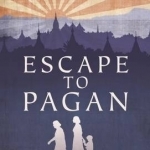
Escape to Pagan: The True Story of One Family's Fight to Survive in World War II Occupied Asia
Book
A gripping true story of survival set in Hong Kong and Burma, as one family struggles against...

Cycling in Amsterdam and the Netherlands: The Very Best Routes in the Cyclist's Paradise
Book
There is no happier cyclist than a Dutch cyclist. This is not only because The Netherlands is mainly...

Lonely Planet Best of Ireland
Lonely Planet, Neil Wilson, Fionn Davenport and Damian Harper
Book
Lonely Planet: The world's leading travel guide publisher Lonely Planet's Best of Ireland is your...

